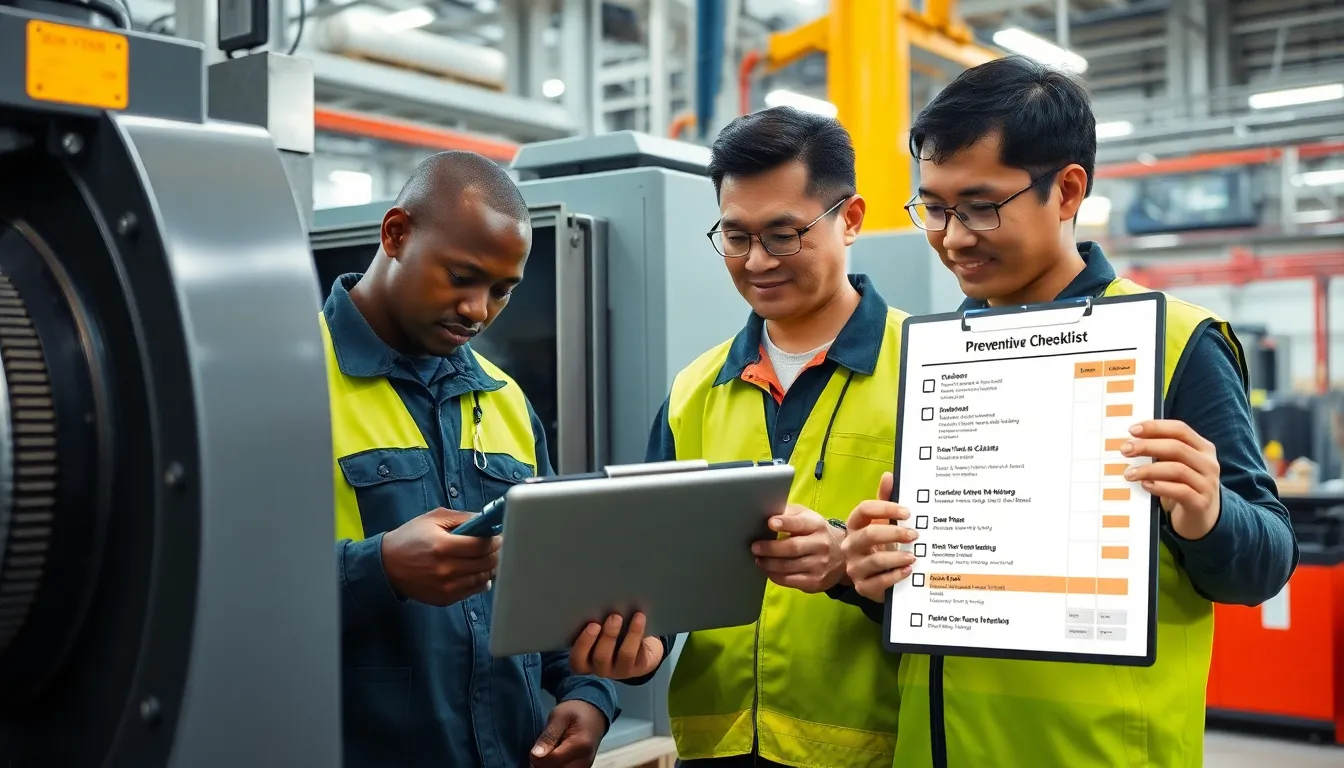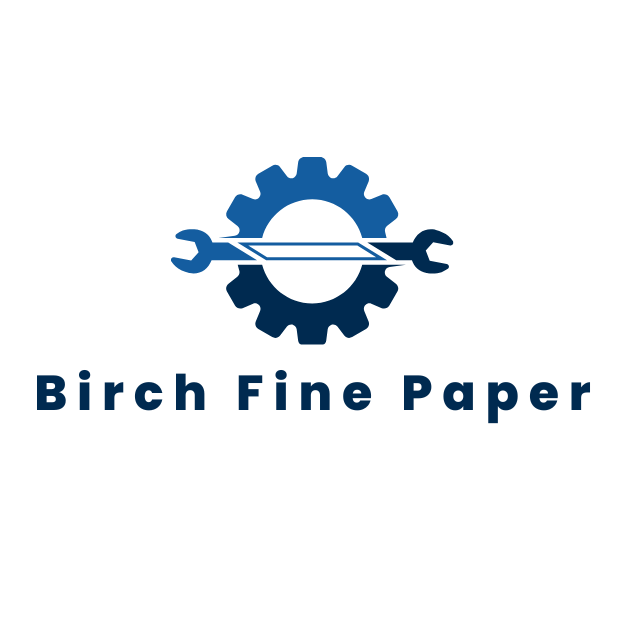Ever felt that sinking feeling when your equipment breaks down unexpectedly? It’s almost like your car deciding to run out of gas right before a big trip. Not fun, right? Enter preventative maintenance checklists, your trusty sidekick in the never-ending saga of keeping machinery happy and productive. These handy lists aren’t just a bunch of bullet points: they’re a game plan to catch issues before they spiral out of control. Let’s dive deep into the world of preventative maintenance, where checklists become the unsung heroes of smooth operations.
Table of Contents
ToggleWhat Is Preventative Maintenance?

Preventative maintenance refers to regular and routine actions taken to keep equipment and facilities running efficiently, minimizing downtime and the likelihood of catastrophic failures. Rather than waiting for equipment to break down, preventative maintenance takes a proactive approach. This could involve anything from routine inspections and lubricant applications to replacing worn-out parts before they lead to serious problems. Think of it as giving your equipment a health checkup, ensuring everything’s in tip-top shape before it starts misbehaving.
By scheduling these maintenance activities in advance, organizations can save both time and money in the long run. It’s a strategy that pays off, literally. When you’re on top of your maintenance game, you also enhance safety for employees by reducing the chances of hazardous equipment malfunctions.
Benefits of Using Preventative Maintenance Checklists
Preventative maintenance checklists are more than a simple to-do list: they’re powerful tools that bring a variety of benefits to organizations.
- Increased Equipment Longevity: Regular maintenance extends the life of machinery and equipment. When tasks are performed regularly, the wear and tear is minimized, allowing companies to maximize their investment.
- Reduced Downtime: By identifying and addressing potential issues before they escalate, organizations can maintain operational efficiency and minimize unexpected breakdowns. Less downtime means more productivity.
- Cost Efficiency: Fixing an issue before it breaks can save a significant amount of money. Preventative measures are usually much less expensive than repairs stemming from neglect.
- Enhanced Safety: Safe equipment leads to a safer workplace. Checklists ensure regular inspection of safety features, reducing the risk of accidents and injuries.
- Regulatory Compliance: Many industries are subject to strict regulations about equipment maintenance. A detailed checklist ensures that organizations keep in line with these requirements, avoiding penalties.
Key Components of Effective Checklists
An effective preventative maintenance checklist must be more than just a piece of paper: it needs to be thorough, actionable, and tailored to specific equipment. Here are some key components to consider:
- Clear Objectives: Each checklist should start with a defined purpose. Whether it’s daily inspections or yearly overhauls, knowing the objective helps focus efforts.
- Detailed Task Descriptions: Clearly outline each task that needs to be completed, breaking it down into manageable steps. Include who’s responsible and any necessary tools or materials.
- Frequency of Tasks: Define how often each task should be completed. Some tasks may be daily, while others might be monthly or seasonal. A clear timeline helps ensure nothing falls through the cracks.
- Documentation Space: Allow room for technicians to note findings, maintenance performed, and any concerns. This creates a record that aids in future inspections and planning.
- Review and Update Procedures: Regularly review and update the checklist to reflect any changes in machinery, best practices, or regulatory requirements.
Industry-Specific Checklist Examples
While the concept of preventative maintenance checklists is universal, the specifics can vary wildly by industry. Here are a few examples:
- Manufacturing: Regular machine calibration checks, lubrication schedules, and safety equipment inspections form the backbone of manufacturing maintenance.
- Healthcare: In medical facilities, checklists ensure that medical equipment is regularly serviced and sanitized, maintaining the highest level of patient safety.
- HVAC Industry: Checklists might include filter changes, coil cleaning, and system performance checks to ensure heating and cooling systems operate efficiently.
- Automotive: In automotive settings, tire checks, fluid levels, and brake inspections usually dominate the checklist, ensuring vehicles remain road-worthy.
- Construction: Equipment checks focus on the structural integrity of machinery and safety features, safeguarding both the machines and the workers.
These industry-specific details offer tailored maintenance practices that ensure optimum performance.
How to Create a Custom Checklist
Creating a custom preventative maintenance checklist isn’t rocket science: but, it does require thoughtfulness and a little organization. Here’s a simple guide to get you started:
- Identify Equipment and Tasks: Begin by listing all equipment requiring maintenance and the tasks involved. Consider the frequency and the complexity of the tasks.
- Consult with Experts: Don’t be shy. Consult technicians or industry experts familiar with the equipment to determine the most critical tasks that shouldn’t be overlooked.
- Design the Checklist Layout: Choose a format that makes sense: digital checklists might allow for easier updates, while printed versions can be carried to the equipment easily.
- Pilot and Adjust: Before rolling out the checklist company-wide, test it with a small group. Gather feedback on clarity and effectiveness, then make necessary adjustments based on their input.
- Educate Your Team: Train staff on how to use the checklist, emphasizing its importance in their daily routines.
Implementing Your Checklist: Best Practices
Having a checklist is one thing: implementing it effectively is another. Here are some best practices to ensure your preventative maintenance checklists are put to good use:
- Regular Training: Schedule regular training sessions to remind staff of the checklist’s importance, ensuring everyone knows their responsibilities.
- Incorporate Technology: Use maintenance management software that can automate reminders and track completion status, making maintenance oversight much simpler.
- Engage the Team: Encourage technicians to provide input on the checklist. When they feel their experience is valued, they’re more likely to adhere to maintenance practices.
- Track Metrics: Keep an eye on maintenance metrics, like the frequency of breakdowns and maintenance costs, to measure the effectiveness of the checklists.
- Routine Review: Regularly revisit and revise checklists based on feedback and performance, ensuring they evolve with changes in equipment and workplace practices.



